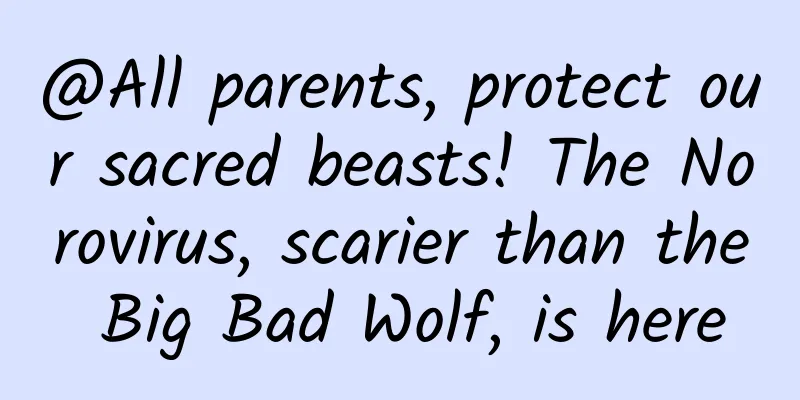Don’t pick snails from the roadside!

|
Audit expert: Li Weiyang Well-known science writer Source: Weibo Summer is a rainy season. Since the beginning of summer, a kind of fist-sized snail has frequently appeared in many parks and communities in southern my country. They look so cute that many people even want to take them home as pets. However, foodies are more concerned about another question: Can these snails be eaten? In response to this, disease control departments in various places urgently remind everyone not to be misled by their harmless appearance. If you grab them with your hands or let them crawl on your body, your life may even be in danger! What is going on? Let's find out today. 1 What are we talking about when we talk about snails? Speaking of snails, I believe many people are familiar with them. There should be many friends like me who bring local snails home to raise. The snail I collected at the Beijing Science Center was put back after taking a photo. Source丨Author However, many people don't know that the word "snail" we often say does not strictly refer to a certain type of organism in biology, but refers to some groups of gastropods in the phylum Mollusca that live on land and in freshwater environments. In the Western context, both aquatic snails and terrestrial snails can be called "snail", while in Chinese, snails generally refer to terrestrial species in the class Gastropoda. Snail anatomy Source: Baidu Encyclopedia Although they may not be closely related biologically, snails usually have a similar appearance. The entire body is composed of eyes, mouth, feet, shell, tentacles, etc., and the body is covered with snail shells of different shapes and sizes. 2 How did snails end up on human tables? When it comes to eating snails, the first thing that comes to mind is French cuisine. France has many world-renowned delicacies, and French baked snails are one of the most representative ones. Today, many people have regarded snails as a unique French delicacy. Food store counter in Pompeii Source: Tencent However, serving snails as a delicacy is not a French creation. As early as the Roman Empire, people have begun to eat snails. During the excavation of the ancient city of Pompeii, archaeologists also found snails in pottery jars used to store food in the ancient city's food stores. Source: Zhihu The history of French people eating snails can be traced back to the Middle Ages. At that time, France had begun to grow grapes on a large scale. In order to eliminate snails that harm grape leaves, people began to catch wild snails, clean them, and cook them before eating. As time went by, people continued to improve the cooking methods. By the 18th century, edible snails had become popular in France, and many popular ways of eating them appeared throughout France. 3 Don't touch the snails on the roadside! Don’t get me wrong, we’re not here to make food recommendations today! Next, let’s get back to the topic of giant African snails. The African giant snail (Achatina fulica), also known as the brown cloud agate snail, belongs to the genus Achatina of the family Achatina of the order Achatina of the order Achatina of the order Gastropoda, and is native to eastern Africa. Unlike the common spiral and flat snail shells, the African giant snail has a thinner, spindle-shaped shell at the end, similar in shape to aquatic snails, and has brown or brown patterns on the shell. Giant African snail Source: Wiki However, the biggest difference between it and other common snails is its size. The average length of an adult African giant snail can reach 8 cm, and the maximum can reach more than 20 cm. Its lifespan can be as long as 9 years, making it a veritable giant among snails. The giant African snail needs to constantly replenish water to maintain its normal life activities, and continuous direct sunlight can also cause dehydration. Therefore, the giant African snail usually lives in a dark and humid environment, hiding during the day and coming out at night. Therefore, the time when people encounter the "group travel" of the giant African snail is usually at night after rain. A very famous photo of the giant African snail Source: Internet The giant African snail is large and meaty. As early as the early 20th century, people began to breed and eat it. There are even rumors that the US military during World War II used this snail as food storage. As for the history of the giant African snail entering my country, it can be traced back to the 1930s, when the giant African snail was introduced to Taiwan for breeding as food. Some of the snails escaped into the wild, began to reproduce, and spread to the mainland through various channels. The giant African snail mainly feeds on plant leaves, and its appetite is astonishing. Once it enters farmland, it will cause great harm to crops. Not only that, the African giant snail is also the intermediate host of rat lungworm (also known as Guangzhou roundworm), which can easily cause meningitis after entering the human body and cause permanent damage to the central nervous system. As early as 1985, there was news that a family of five died in Taiwan because they ate raw African giant snails. Angiostrongylus cantonensis under a microscope Source: Evergreen.com In addition, the giant African snail is a carrier of many pathogens, and its mucus and feces also contain many parasites and bacteria. Therefore, the giant African snail became one of the first 16 species included in the "List of Alien Invasive Species in China". Relevant departments have also adopted a variety of methods such as mechanical, biological, and chemical control in order to completely eliminate these dangerous invasive species. Although as an important member of the food world, snail meat has become a high-quality ingredient sought after by foodies for its unique taste, rich protein content, extremely low fat and almost zero cholesterol, these giant African snails living in the wild are more like small bombs hiding "biological weapons" than farmed edible snails. Here, the editor would like to remind everyone that if you want to taste the delicious snails, you must choose snails produced by regular breeding institutions and eat them after scientific cooking and processing. As for those big snails that appear after the rain, we should try to stay away from them! Source: Digital Beijing Science Center |
<<: How to choose fish balls? What fish to use to make fish balls
Recommend
What medicine should I take if my leucorrhea is yellow and has a strange smell?
Yellow leucorrhea with odor in women will become ...
What causes breast hyperplasia?
As people in modern society pay more and more att...
Is it normal to have nipple pain after abortion?
Many young women do not use contraceptive methods...
Will headaches during confinement lead to chronic illness? What to watch out for
Women will stay in confinement after giving birth...
How deadly is "drinking more hot water"? It may actually cause cancer
Girl: Honey, my stomach hurts. Boyfriend: Honey, ...
What is the thickness of the endometrium before and after menstruation?
Menstruation is a physiological manifestation uni...
Yellow leucorrhea in early pregnancy
Women's secretions can generally reflect whet...
Use the right sanitary napkin and you will never have gynecological diseases again
The female reproductive system is quite sensitive...
Pregnancy forty days lower abdomen pain on the right side
When a woman is 40 days pregnant, she is still in...
What title was given to Sima Yi after his death in the Romance of the Three Kingdoms? What is the image of Xiahou Dun in the Romance of the Three Kingdoms?
The Romance of the Three Kingdoms is a long histo...
Is it normal for pregnant women to have yellow vaginal discharge?
Pregnancy is an important stage in a woman's ...
What wakes you up in the morning is not the alarm clock, but the "five o'clock diarrhea"
There is a kind of waking up not by the alarm clo...
What to do if you have a severe cough during 7 months of pregnancy
The number of pregnant women around us may gradua...
How long does it take for abdominal slimming pants to be effective?
Loving beauty is human nature. Some people use tu...
What should women do if they have vaginal discharge with odor?
It is relatively normal for women to have leucorr...









